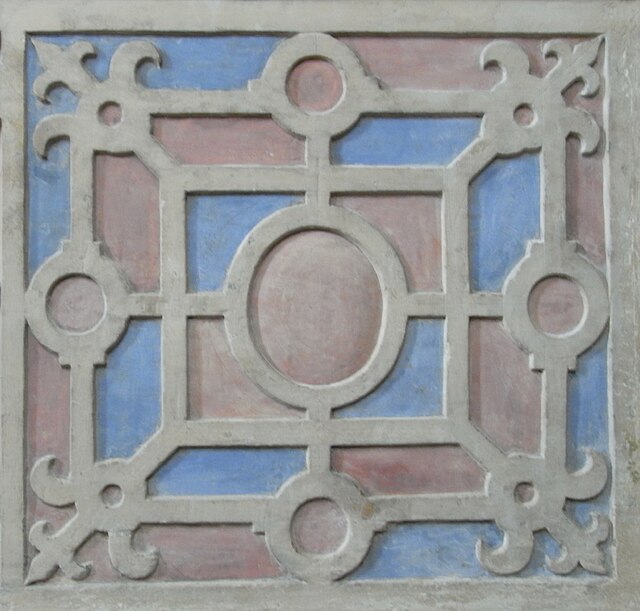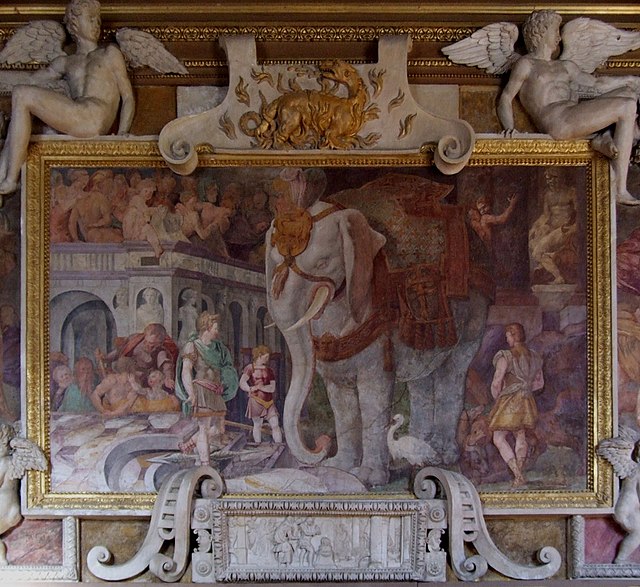In the history of art and design, strapwork is the use of stylised representations in ornament of ribbon-like forms. These may loosely imitate leather straps, parchment or metal cut into elaborate shapes, with piercings, and often interwoven in a geometric pattern. In early examples there may or may not be three-dimensionality, either actual in curling relief ends of the elements, or just represented in two dimensions. As the style continued, these curling elements became more prominent, often turning into scrollwork, where the ends curl into spirals or scrolls. By the Baroque scrollwork was a common element in ornament, often partly submerged by other rich ornament.
Typical early English strapwork of 1589, detail from the monument to Sir Gawen Carew in Exeter Cathedral
French stucco, scrollwork and strapwork by Rosso Fiorentino in the Palace of Fontainebleau, 1530s
Ornament print, 1550s, Hans Vredeman de Vries
Sophisticated three-dimensional strapwork in stucco at the Palace of Fontainebleau
The scroll in art is an element of ornament and graphic design featuring spirals and rolling incomplete circle motifs, some of which resemble the edge-on view of a book or document in scroll form, though many types are plant-scrolls, which loosely represent plant forms such as vines, with leaves or flowers attached. Scrollwork is a term for some forms of decoration dominated by spiralling scrolls, today used in popular language for two-dimensional decorative flourishes and arabesques of all kinds, especially those with circular or spiralling shapes.
Band of running scroll decoration on the 12th-century Indian Hoysaleswara Temple
Chinese plate, Jingdezhen, 1271–1368, with three zones of scrolls with flowers
Austrian inhabited scroll frieze, 1890s
The "Tellus Panel" from the Ara Pacis, Rome, c. 27 AD. A spreading scrollwork panel below, scrolling forms coming off a straight stem in the side panels, and a border band of meanders below the figures.








